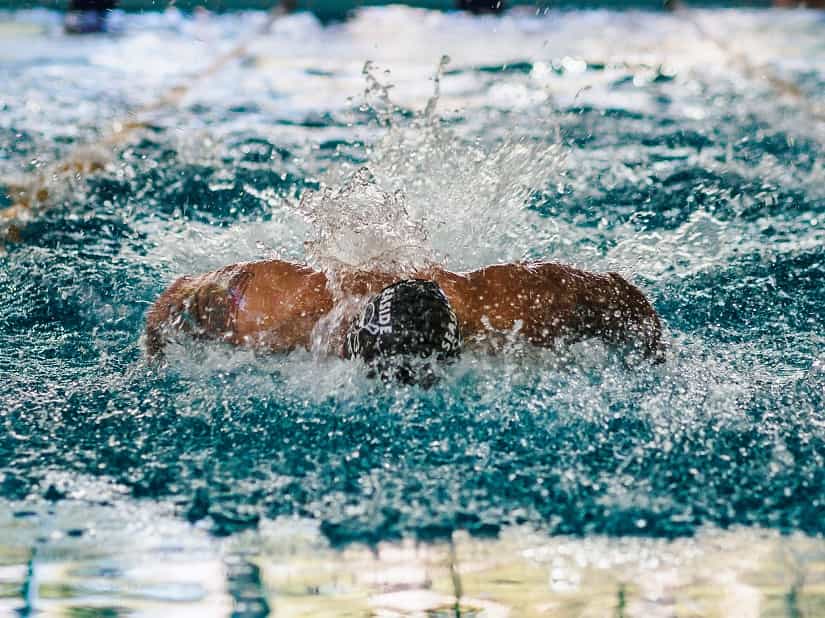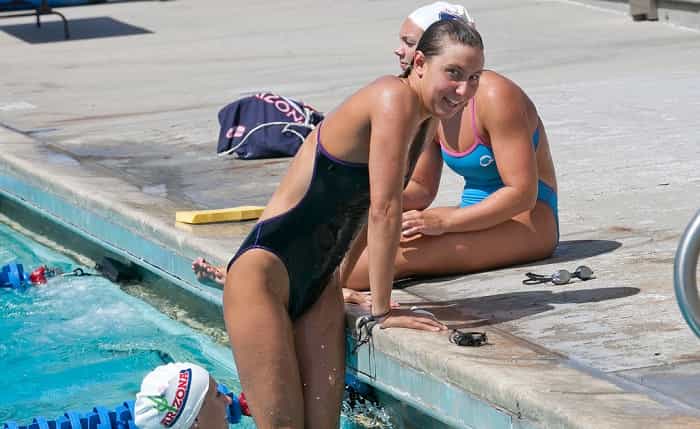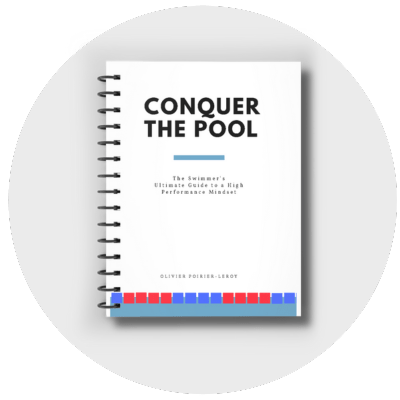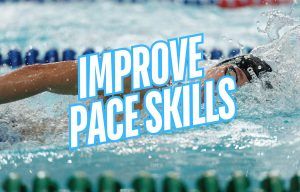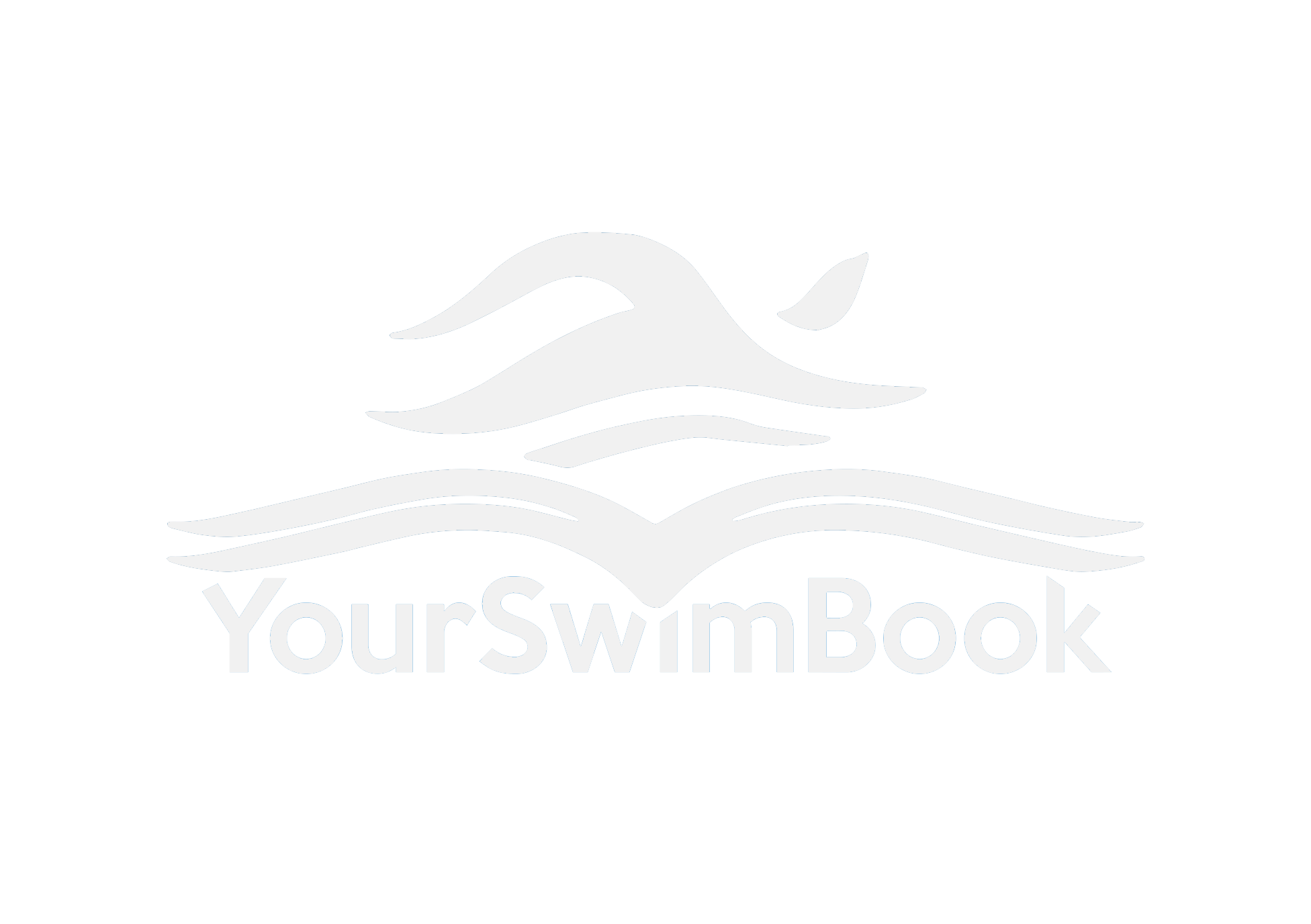Swimmers spend a lot of time at the pool. Two hour practices and training up to 10 times per week is typical.
But is it possible that we aren’t making the most of our workouts? Is it possible that we aren’t fully using the time we are spending in the water?
Here are five ways that swimmers are wasting their time during their swim practices:
1. Warming up for way too long.
While at the pool for a late night casual lap swim recently I was doing a few arm swings behind the blocks, getting ready to hop in and do an hour-long solo swim. Not too far off was a white board from one of the local clubs that still had their practice scrawled on it in black ink.
Curiosity getting the better of me, I leaned over and took a gander at the work the club swimmers had been up to earlier. I was a little surprised to see a warm-up that totaled 2,600 meters.
They weren’t just any kind of meters either… It was all long-rep sets without descending efforts or any kind of focused skill work.
In other words…boring.
I have talked repeatedly on this site about the importance of warming up, whether it is mastering the swim-meet warm-up or warming up in practice.
And let’s be serious, nobody needs to do over 2,600m to get warmed up, especially when there is a pre-workout mobilization routine in place.
I understand why it sometimes happens—the pool space is rented out already, and coaches need to fill the 2-hour time slot with something.
But really, that is not an excuse.
Warm-up, whether in competition or in practice should be targeted and focused, not mindless swimming designed solely to get in yardage.
2. Not doing enough race pace training.
The simplest way to race fast is to train fast. So simple, right?
And yet, I cannot tell you how many swimmers I’ve come across who are shocked and chagrined at the way they swim at the big meet when they haven’t done a meter of fast swimming in practice.
Look…
I’m not saying you should only do race pace stuff in practice.
No one can sustain jumping into the pool and doing 5,000 yards at their goal 100m freestyle without sustaining some debilitating adrenal fatigue and exhaustion.
And doing lots and lots of easy to moderately intense swimming in practice will help you develop a better feel for the water (one of the few arguments for high meter workouts that I genuinely appreciate), and can help build a solid aerobic foundation.
Which can help you swim faster.
But swimming at pace should figure prominently in your workouts.
You get something else from doing race pace work in training: the confidence to know that you will be able to hit the speed you want when you are fully shaved down and are hitting your swim taper.
3. Garbage yardage.
One of the things I appreciated about my swim coaches when I was a precocious age grouper was the communication of the focus and purpose of each set. When the swim practice was penciled in on the chalkboard clear and measurable focus points were given for each part of the workout.
This is profoundly important for a couple different reasons: first, unfocused yardage means that the swimmer’s mind will wander, swiftly followed by technique and intent. Secondly, it’s yawn-inducing.
Swimmers want to be challenged, they crave it (no matter how much they will cringe and groan when the tough stuff shows up over the course of a workout).
This challenge doesn’t just have to come in the form of mega high intensity swimming—it can be done just as easily with breathing patterns, hitting a specific number of underwater dolphin kicks off each wall, hitting a specific stroke count, and so on.
With these kinds of mini-challenges keeping a swimmer’s attention over the course of a long, two-hour practice suddenly becomes a whole lot easier.
4. Not setting goals for yourself in training.
One way that you can get ahead of the curve when it comes to building up more focused yardage—as opposed to waiting for coach to tell you what to focus on—is to set yourself training goals for the workout.
Even just having one thing you are going to work on relentlessly can have the effect of bleeding into the rest of your workout.
For example, if you decide that today is the day you are going to have a totally money streamline off every push-off and turn, that commitment to doing something superbly well will inevitably seep into the rest of your swimming.
Here are some other simple things you can do to boost engagement:
- Setting yourself a target stroke count or tempo for each of your sets.
- Having interval goals that progress over time. For example, doing 50s kick @1:05 this week, @1:00 next week, @:55 the following week, and so on.
- Choose one technical element to focus on during each phase of the workout: a high elbow catch during the main set, keeping your face straight down during warm-up and warm-down, etc.
5. Swimming with shoddy technique.
If you took an objective look at the way you swim in practice how much of it would you say is done with awesome technique? How many of those meters are performed with the kind of technique you know you are capable of?
And how many are performed with beachball streamlines, pulling on the lane rope, coasting into the finish, never breathing bilaterally, or not finishing your breaststroke kicks properly?
Swimmers shouldn’t have two techniques—one they use in practice and one they have when they race.
Sure, you want to be able to float easily through the different types of freestyle where necessary (from shoulder to hip-driven, for instance), but if you are serious about improving there is no sense in training one way and hoping to be able to compete in another.
If there is one guideline you can use to help keep your swim practices focused, it’s this…
Train the way you want to race.
The Next Step
Are you currently doing any of these time-wasters in workout? Can you clean up your swimming a little bit and be more effective in the pool with the time you already have?
Pay some attention to one of the points above and let me know how it goes. You can get in touch via the YourSwimBook newsletter.
Sign up here and I will send you a free copy of my “33 Epic Workouts for Swimmers” PDF that includes practices from Michael Phelps, Katie Ledecky, and much more.

